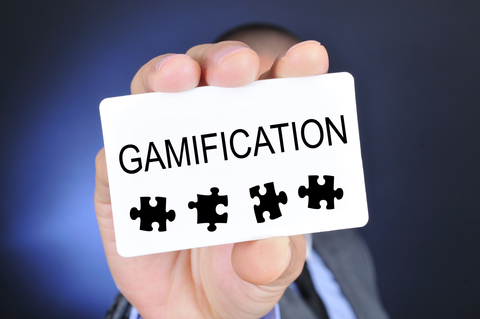
We’ve all been part of training sessions that were so boring we found ourselves checking the clock every five minutes and struggling to stay awake.
So why would we put our best and brightest employees through that?
Fortunately, there are some ways to inject more life into leadership development programs. One way to do this is by making learning a game, an approach known as gamification.
Simply put, gamification is applying game techniques or gaming elements in the workplace or in other contexts where they aren’t traditionally used to motivate people to achieve their goals. While gamification today often involves digital technology, such as computer programs that allow employees to complete simulated tasks and earn points, the term can be applied more broadly to include a variety of interactive learning techniques, such as role-playing. Regardless of the format, the key is finding a unique way to make learning interactive, competitive and fun.
Gamification has worked well for a number of companies across industries, from Nike, Starbucks and the U.S. Army to the Deloitte Leadership Academy, which saw a 37-percent increase in the number of returning weekly users after giving learners an opportunity to earn badges after completing training.
However, that doesn’t mean this approach is right for every organization. Training and development professionals should carefully consider how it will fit into their overall strategy before jumping on the gamification bandwagon.
Here are five questions you should ask to help you decide if gamification for leadership training is right for your company.
What Goal Are You Trying to Achieve with Gamification?
Not all topics lends themselves to a game-style curriculum, so consider what skills and/or concepts you need your leaders to master. If it’s behavior-oriented learning, such as leading virtual teams or enhancing accountability, gamification may be an ideal way to use roleplaying and award points based on performance. If you need to cover more technical topics, consider providing self-guided online or e-learning courses and awarding points for each completed course.
How Will You Measure Success?
Does winning mean you understand the material better? Or could winning just be a sign of luck? Measuring the success of the game will depend on what type of game is played.
Gamification can complement traditional approaches to leadership assessment and development. While it isn’t a replacement for regular coaching sessions or performance evaluations, an employee’s performance in training-oriented games can be one way to assess how well he or she has learned to apply new skills.
That’s why it’s important to have a way to measure and track outcomes over time.
What Are the Incentives?
When given the option to listen to a lecture or play a game, chances are your employees will vote for a game. It may be more fun, but are there other incentives for them to play?
Learners recall just 10 percent of what they read and 20 percent of what they hear. But they remember 90 percent if they do something themselves, even if it’s as simple as a simulation or roleplaying scenario. Interactive experiences tend to be more memorable, and putting theories into practice can be a motivational way for leaders to learn. Knowing that they will get a firm understanding of the material through playing a game is a powerful incentive, but providing other incentives — prizes, badges or credentials they can include on their resume or LinkedIn profile to show they passed a training or became certified — can motivate leaders to work even harder.
What Type of Games Will Help Us Achieve Our Goals?
If you plan to use digital games, consider whether they can be implemented using software as a service (SaaS) or whether you will need custom software.
SaaS is the most common form of digital games, and it’s entirely cloud-based. There is minimal upkeep required, and users can access it from any device with an Internet connection. The downside to this is that a one-size-fits-all approach may not work for your industry or the goals you are trying to achieve.
Customized software solutions take more time and money to develop, so you’ll need to evaluate those costs and whether they will be worthwhile.
Are We Doing It For the Right Reasons?
There are many reasons to use gamification — you may be looking to create a more interactive training experience, boost employee morale or improve employee collaboration. But everything comes with downsides and gamification is no different. If there is already tension in the office or issues with employee cohesion, increasing the level of office competition may do more harm than good.
Finally, consider how frequently your company is using gamification and for which types of training. The key is not to rely on this method as a sole form of training, but to use it just enough to keep employees engaged.
Gamification has worked its way into all forms of business and has been successfully implemented in major corporations around the world, and it could become more popular in the future, making it an accessible option for your company. Keep in mind, however, that gamification is not a solution in itself, nor is it something to try because it happens to be popular. It should be part of a larger strategy that includes assessments and a variety of leadership development programs.
Darleen DeRosa, Ph.D., is a managing partner at OnPoint Consulting. Email Darleen at dderosa@onpointconsultingllc.com.








